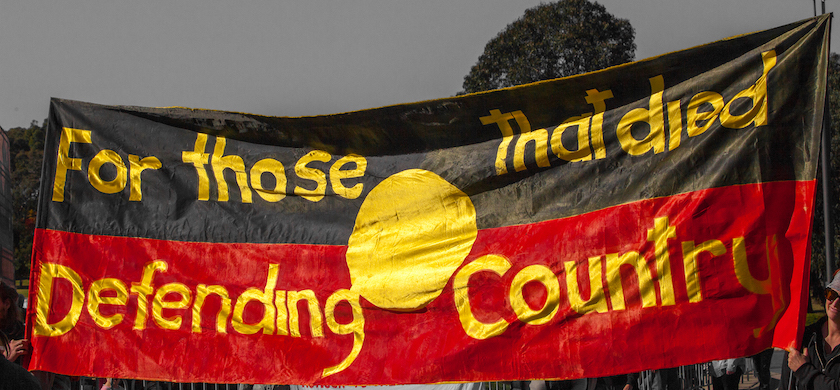Anzac Day
From soldier to civilian – a dangerous and unsupported transition
“I thought, like most Australians, that we did a pretty good job looking after our veterans”.

That’s a quote from Patrick Lindsay, author of the documentary The home front: the never-ending war within our veterans, interviewed by Geraldine Doogue on last weekend’s Saturday Extra: How do we best support our veterans? (11 minutes).
When he started researching for that work, informed by interviews with returned soldiers and by the Interim Report of the Commission into Defence and Veteran Suicide, he soon realized how wrong he (and probably most Australians) had been. The transition is brutal: one day he or she is engaged in a demanding task with a sense of purpose, in a community with supportive structures. The next day all that is gone.
Lindsay’s figures on suicides are confronting. For example, in the 20 years we were involved in the Afghanistan conflict, we lost 41 soldiers in combat. Over that same 20 years more than 700 serving and discharged soldiers took their own lives. The suicide rate of veterans under 30 is twice the national average. As well as those with physical injuries, many other veterans endure disproportionate rates of mental illness, dependence on alcohol and other drugs, marriage breakups and homelessness.
There is no one cause of these conditions. Unsurprisingly those who are sent on frequent re-deployment, such as special forces, are vulnerable. But so too are those who are discharged after only a short period of service, because they are suddenly told they are not wanted, or that they are not up to the job.
Lindsay draws attention to the lack of resources directed to veterans. The Department of Veterans’ Affairs has long waiting lists of people seeking help. And younger veterans aren’t finding the RSL to be relevant to their needs.
Another perspective on veterans’ experience is provided by Deacon Jim Curtain, who served as a chaplain in the air force, including during the second Gulf War in the Middle East. Writing in Eureka Street – Gratitude needs ambivalence on the costs of war – he describes the phenomenon of moral injury, “the damage done to one’s conscience or moral compass when that person perpetrates, witnesses, or fails to prevent acts that transgress one’s own moral beliefs, values or ethical codes of conduct”.
Anyone wishing to make a submission to the Commission on Defence and Veteran Suicide can do so until October 13.
A Wiradjuri warrior’s Anzac Day
On one reading Stan Grant’s reflection on Anzac Day is deeply personal, and on another it is the story of how a nation dealt with wars in times past – a nation whose oldest and most recent settlers are yet to come together with a shared understanding of conflicts at home and abroad.
His post – On Anzac Day, I honour the story of my uncle, a Wiradjuri warrior killed in a war he was never meant to fight – tells stories we find hard to confront. His great uncle died in France in the 1914-18 War, wearing the uniform of a country that didn’t recognize his citizenship.
His grandfather was one of the Rats of Tobruk, who should have been received as a hero, but as Grant recounts:
In the army he found an equality he had never found out of uniform. But he returned to the same segregated, racist country he had left. He was good enough to fight but not good enough to share a drink in the pub with his digger mates.
Grant’s story is not only about the perspective of a Wiradjuri man. He is giving us “a glimpse of an Australia we still reach for”.
Another war to remember

If the groups in the Anzac parade had marched in chronological order, the people behind the frontier war banner should have been at the very front. But they were the last to join the Canberra march. That position carried a strong message of unfinished business.
Three historians – Carolyn Holbrook of Deakin University, Frank Bongiorno of ANU, and Michelle Arrow of Macquarie University – present a convincing case for recognizing the frontier wars. Their Conversation article The Australian War Memorial must deal properly with the frontier wars supports the views of Veteran Affairs Minister Matt Keogh and War Memorial Council Chair Kim Beazley, that the War Memorial should provide coverage of the conflict between settler and indigenous Australians. To quote Beazley “We must give the Aboriginal population the dignity of resistance”.
With a similar message are Ray Kerkhove, author of How they fought: indigenous tactics and weaponry of Australia’s frontier wars, and Nina Murray, author of Wiray Bimirr Madhu, interviewed on Late Night Live. In the 29-minute segment The untold story of First Nations resistance in the Frontier Wars they dispel any notion that Aboriginal Australians were weak victims of settler aggression. Like the indigenous Americans they were warriors, who fought with tactical sophistication and with powerful weapons, mainly traditional. By no means were the battles all one-sided.
Kerkhove and Murray describe the process in constructing an accurate military history of these conflicts. Kerkhove comments that following the Myall Creek massacre in 1838, which led to capital punishment for many of the perpetrators, settler accounts of subsequent similar incidents tended to use sanitized language, such as “dispersal”. The practices continued.